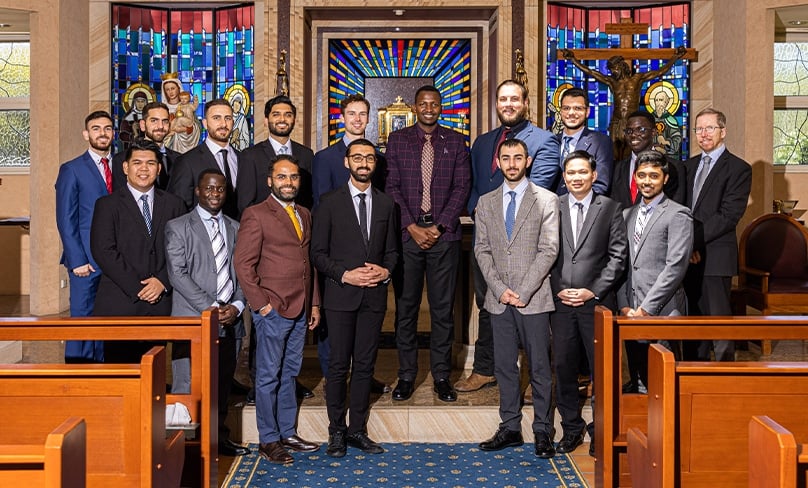
This year, the Seminary of the Good Shepherd in Homebush, which was established in 1996, has received its largest intake of new seminarians throughout its entire history. We would need to go back 37 years to 1986 since 17 men entered the predecessor seminary, St Patrick’s College, Manly.
Having stated this, we are not entirely comparing apples with apples, as the Dioceses of Wagga Wagga and Parramatta sent their seminarians to St Patrick’s College in those days; whereas, now those regional dioceses form their own seminarians in their own seminaries (St John Vianney Seminary in the Wagga Wagga Diocese was established in 1992 and the Holy Spirit Seminary in the Parramatta Diocese was established in 2008).
The total number of seminarians in the Seminary in Homebush is now 48. If we receive a large intake next year, too, the Seminary’s facilities will burst at the seams! This years’ biggest bumper crop is attributed to seven noteworthy factors.
-
George Cardinal Pell’s Legacy
The increase in priestly vocations is among the fruits of George Cardinal Pell’s legacy, which Archbishop Anthony Fisher, OP affirmed during the Cardinal’s Requiem Mass. I was ministering as a deacon in a parish when the Pope appointed the former Archbishop of Melbourne George Pell to be the eighth Archdiocese of Sydney. As I had not been long out of the Seminary of the Good Shepherd, I was still in regular contact with the seminarians. They had told me that upon the night the Rector announced the news of the Cardinal’s appointment to them, the Seminary was reverberating with the sound of their cheering. To me, this indicated that men in formation look for strong leadership in a society that is becoming less sympathetic to the Gospel. The Cardinal ensured that the Seminary form our future priests to have a love for the Church and to better understand and appreciate the wisdom of her teachings. His example in courageously confronting deception that undermines Gospel values has served to better equip seminarians to critique the ideologies and thoughts that are contrary to those of the community of the Church. Consequently, in addition to saving them from confusion, seminarians have grown in their confidence to be a voice for Christ in a secular culture that lacks sympathy for the Gospel.
About 15 years ago, the Cardinal introduced a Propaedeutic Year (otherwise known as a “Spiritual Year”) to provide a solid foundation for the human and spiritual dimensions of the seminarians’ formation prior to their undertaking the intellectual and pastoral dimensions of their formation. Regarding the human dimension of priestly formation, this dimension is foundational because the humanity of the priest cooperates with the grace seminarians will receive in the Sacrament of Holy Orders when they are ordained. Ultimately, a high level of maturity, self-knowledge, and interior freedom is required for ordained ministers to be able to represent the love of Christ faithfully and sacramentally. Thus, human formation consists of developing a healthy emotional life with sound awareness of the seminarian’s own emotional needs and differentiating the affective needs of others from his own. Cardinal Pell’s predecessor Cardinal Clancy improved the human dimension of priestly formation by employing a priest who was trained in psychology to help the seminarians to resolve their human developmental factors so that they could be more receptive to God’s grace. In addition to being in keeping with the Vatican’s guidelines, Cardinal Pell continued what Cardinal Clancy started. However, as not enough priests were trained in psychology, none were available to be on the Seminary Faculty. In response, Cardinal Pell employed psychologists who were well qualified and who also gave witness to the Gospel through their Religious Profession (one was a Marist Brother and the other psychologist who is still on the Seminary Faculty is a Religious Sister of Mercy from Alma, Michigan).
As for the spiritual dimension of the Propaedeutic Year, the Cardinal directed the Seminary to enrich the seminarians with the Church’s spiritual tradition. He also introduced the Ignatian 30-Day Retreat in the Propaedeutic Year to ensure that the seminarians learn about the spiritual life not only in theory but in practice, thus integrating their head and heart. His aim was to provide the seminarians with an unshakeable spiritual foundation, which configures them to the heart of Christ. Indeed, this reform the Cardinal introduced has helped the seminarians to develop a living relationship with Jesus, to encounter Christ intimately in Sacred Scripture, and to also discern the presence of the Holy Spirit in daily life and pastoral practice. He also improved the spiritual dimension of the overall formation programme by refurbishing the Seminary Chapel and increasing the time dedicated to prayer in the seminarians’ daily schedule, especially prayer before the Blessed Sacrament, as the Eucharist is central to the life of priests. By making this change, the Cardinal was well ahead of his time, as the American Catholic Bishops have only just recently introduced the Propaedeutic Year in the seminaries throughout the USA last year in 2022.
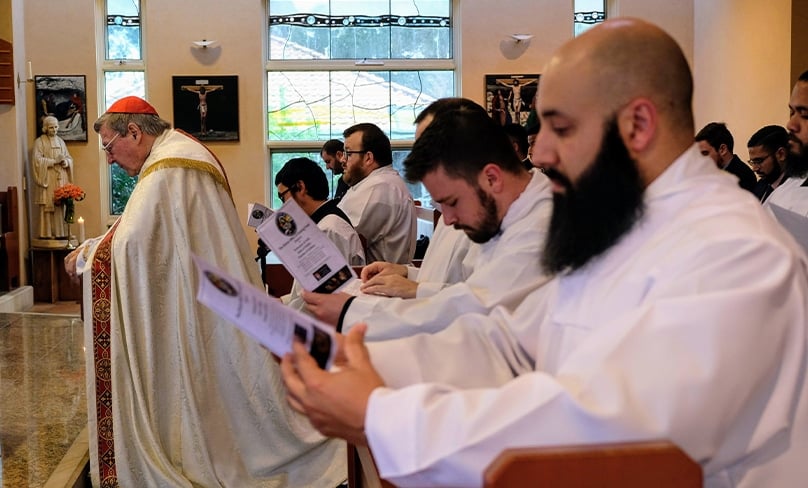
Now that I am back in the Seminary, this time in a position in which I am accountable for the seminarians’ priestly formation as the Rector, I can attest that the Seminary of the Good Shepherd continues to benefit from the reforms Cardinal Pell introduced to priestly formation. These reforms have served to form them to participate more deeply in Christ’s identity as Beloved Son, Chaste Spouse of the Church, Spiritual Father, Spiritual Physician, and Head and Shepherd.
The Cardinal continued to play a significant role in supporting priestly vocations during his retirement, for when he was living in Strathfield before and after his undeserved imprisonment, he attended our community meals in the Dining Room and joined us for prayer in the Chapel.
We all enjoyed his jovial and down-to-earth humor, replete with his wry smile, which he often employed as a form of his fatherly endearment and encouragement. He chose to live nearby as a means of frequently investing his personal interest in the seminarians in view of affirming their vocation, which has been an outstanding asset most other seminaries in the world have not come close to offering. This asset is especially noteworthy when you consider that in the Cardinal, the seminarians were blessed with an outstanding witness due to the courage he exhibited as a formidable pastoral leader amidst a society that has become increasingly hostile to Christ and his Church. Consequently, the seminarians are missing the Cardinal dearly.
Personally, I also feel the loss of the Cardinal in his sudden death, as he ordained me to the Priesthood on 8 June 2001 just after he was installed as the Archbishop of Sydney and I worked with him closely as his Master of Ceremonies and as the Archdiocesan Director of Vocations. As I lived with him in St Mary’s Cathedral for over ten years, I learnt much from him about discernment in the frequent discussions we had about which men who had applied for the Seminary were ready to be admitted. I can indeed attest that Cardinal Pell was a very wise and discerning Archbishop who was well aware of what constitutes authentic inspirations of the Holy Spirit.
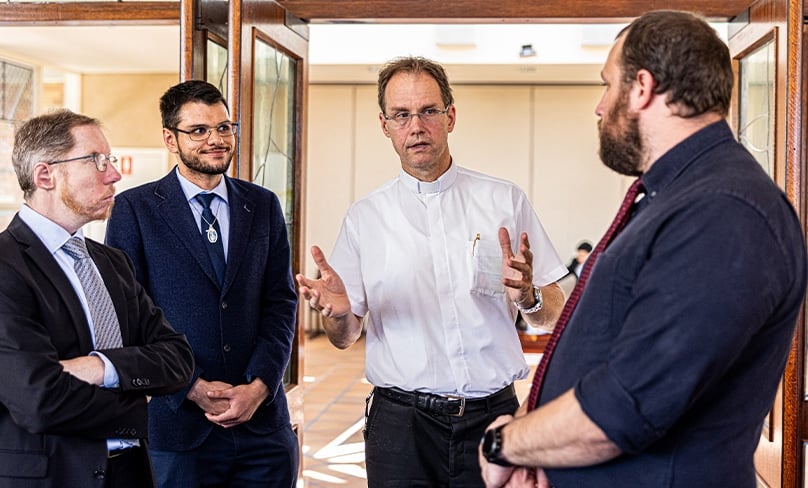
-
Eastern Eparchies’ Efficacy
Five men have been admitted from various Eastern eparchies in Australia; namely: the Maronite Catholic Eparchy, the Chaldean Catholic Eparchy, and the Syro Malabar Eparchy. When I was a seminarian in the Seminary in Homebush two men from the Maronite Eparchy were as fellow seminarians with myself. However, the five men who are now undertaking their priestly formation in this Seminary from three different Eastern rites attest to the strength of faith that has been growing among their various faith-communities in the last few decades. Many families who are in the Eastern rites have been in Australia for long enough now to be assimilated to the Australian culture. Thus, the newly admitted seminarians who have responded to a priestly vocation are among the fruits of what is happening within the grass roots of our national identity.
Among the 17 newly admitted seminarians, five of them are Roman Catholics who have come from overseas. While the admission of seminarians from overseas is not unprecedented, the proportion of men who grew up in Australia – and baptised either as Roman Catholics or Eastern Catholics – is now significantly higher.
The number of priests began to decline consequent to the introduction of the contraceptive pill and the sexual revolution that resulted in the 1960s. In addition to commenting on how we as a Christian society are impacted by the declining number of priests, in a radio message on 11 April 1964, St Pope Paul VI also identified insightfully the solution: “…this problem is the precise and inescapable indicator of the vitality of faith and love of individual parish and diocesan communities, and the evidence of the moral health of Christian families. Wherever numerous vocations to the priesthood and consecrated life are to be found, that is where people are living the Gospel with generosity.” Clearly, this solution of a generous response to God’s love is evident in the vibrant faith-communities of the Eastern rite Catholics. Indeed, they model for every Catholic parish and ecclesial community how to foster priestly vocations.
-
Praying to the Lord of the Harvest
The key question asked during the Plenary Council was: “What is God saying to the Church in Australia?” There is a need to affirm and support those who are called to discern a priestly vocation, without which we would be overlooking what God is doing in the Church in Australia. I know that many Catholics in Australia have been praying for more men to become priests, including the friars and nuns in contemplative religious communities. The increased number of diocesan seminarians is an encouraging result of their intercession.
Priestly vocations often emerge from communities that most fervently respond to Jesus’ only ‘prayer request’ to support his Father’s mission. Specifically, Jesus said: “Plead with the Lord of the harvest to send out workers into His harvest” (Mt 9:38). Returning to my comments above about the Catholics from the Eastern rites warrant further attention on this point. They possess a commendable strength of faith and a cohesive sense of community on account of their having come from countries where their faith has been strenuously tested under heavy persecution. At risk to their very lives, they did not deny their faith. I am not surprised that a good number of men from their communities are responding to God’s call to become priests. Roman Catholics have much to learn from our brothers and sisters in the Eastern rites in this regard. They pray for priestly vocations with great fervour because they understand that sacrifice involves striving for a greater good.
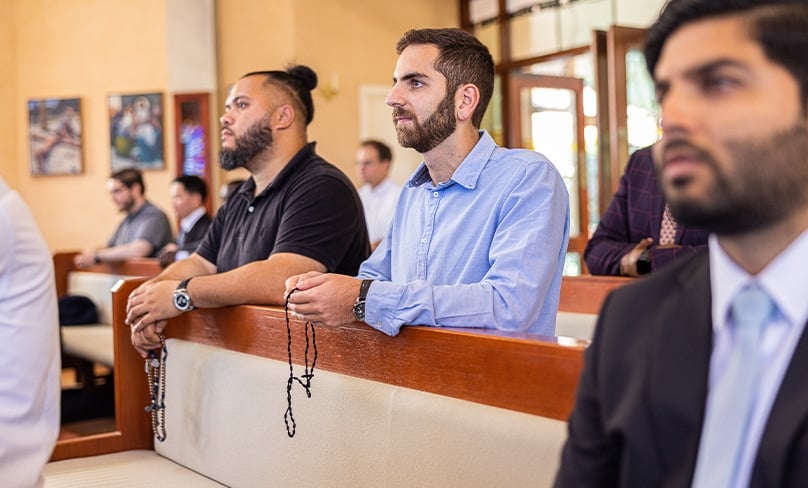
4. The “COVID Effect”
During the pandemic lockdown, we all had more time to reflect. Consequently, many people have been able to wonder and ponder, not simply about what money they could earn, but about what is meaningful in their life. Fear, uncertainty, and anxiety was experienced by many regarding what the future might bring, but a sense of faith, hope, and charity was borne out of the selfless acts of many people who responded to the effects of the pandemic. Rather than the past or the future, this faith-response called for attentiveness to the present moment, which is the quintessential place where God’s grace can be found. In this sense, the “COVID effect” was instrumental in engendering an incarnational spirituality, that is, a spirituality that puts us in touch with how God is present in the everyday experience of human life.
-
University Chaplaincies, Schools, and World Youth Day
Catholic schools have been investing in their staff by forming them as faith-leaders. Likewise, the Confraternity in Christian Doctrine has trained many catechist teachers. We are now seeing the fruits of the inspiration that these faith-leaders are providing. The university chaplaincies have become more active in Catholic and secular universities such that many tertiary students have become more enlivened in their faith. Both the university chaplains and Catholic schools have also shown the impact and importance of World Youth Day by developing the faith-life of the young people who attended these ecclesial international gatherings. In short, these Catholic education institutions have provided young people with positive ecclesial experiences.
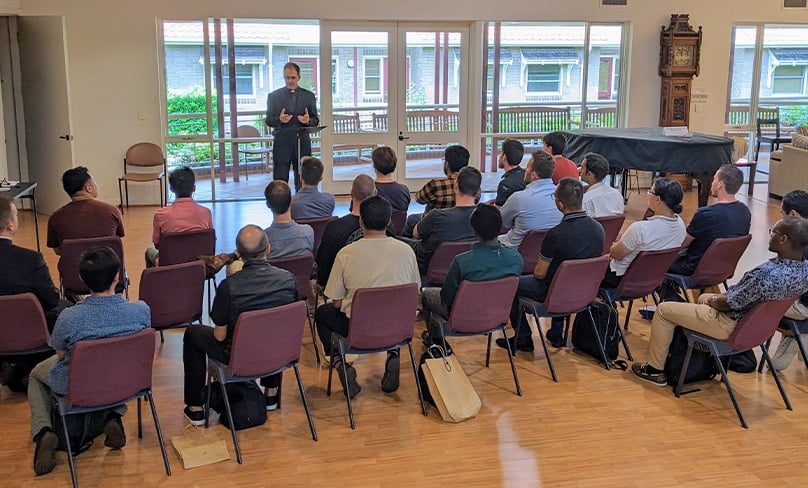
-
Culture of Discernment
If you break down the word discernment into the two Latin words from which this word is derived, you get dis (“apart”) and cenere (“to separate”). Accordingly, to discern means “to separate apart” in order to distinguish what is affecting and informing our motivations when we are faced with more than one choice. If both options are attractive, the best choice might not be obvious; hence, discernment enables us to distinguish our diversity of feelings, conflicting desires, and contrasting thoughts. Consequently, we’re able to perceive what is moving us interiorly, understand our motivations, and assess the reasons that provide the rationale for the best decision.
Having stated this, the primary objective of discernment is not making good decisions. Rather, discernment is a means by which we can give primacy to our relationship with God in a world that would otherwise distract us; or worse, deceive us. Without the gift of discernment, then, we could end up falling for a counterfeit of God’s goodness, truth, and beauty; or worse, worship a false God. If discernment was primarily about making choices that procure favourable results, then discernment could easily amount to no more than superstition. God is the ultimate point of reference in discernment, without which the choices we make mean nothing, for our decisions are not ends in themselves, but a means to a greater union with him. As you can see, discernment is not like a tool that you pick up and put down; rather, it’s a lifestyle.
For over ten years now, Catholics have become more interested in how discernment can help them to follow Christ more faithfully by being more attentive to the interior movements of the Holy Spirit. In response, Diocesan Vocation Directors have been providing Catholics with resources to help them to discern. Consequently, many young Catholics have become more faithful as disciples of Jesus in general, which has helped them to follow God’s desires for them.
-
Growing Number of Young Priests
In the past two decades, a growing number of men have been ordained to the Priesthood from the various dioceses of NSW that send their seminarians to be formed in the Seminary of the Good Shepherd, including the dioceses that have rural areas, such as Canberra and Bathurst. Consequently, young Catholics have benefited from the example these priests have provided by virtue of their fresh faces. Senior priests give good example, too, and they also provide much inspiration to newly ordained priests. Yet, as the newly ordained clergy are young, young Catholics can see something more of themselves in them, as they share more age-related similarities. Additionally, young Catholics realise that the newly ordained priests have had to contend with the similar challenges that our contemporary culture has presented to them. Consequently, young Catholics tend to relate more easily to young priests and be inspired by their sincere gift of self in response to God’s call.
